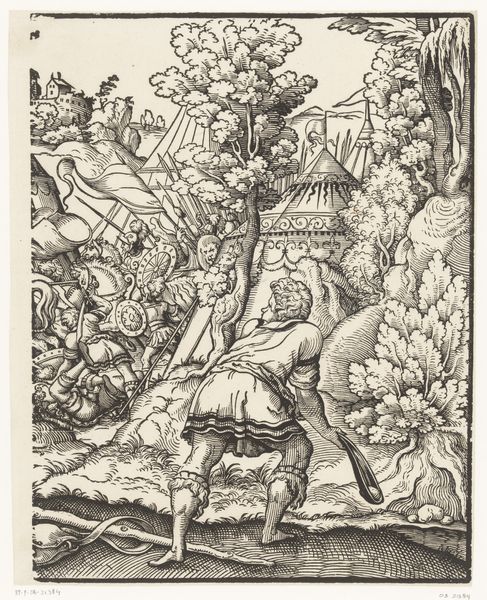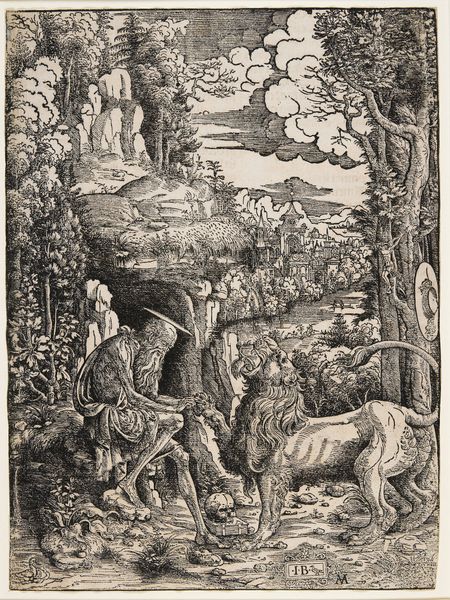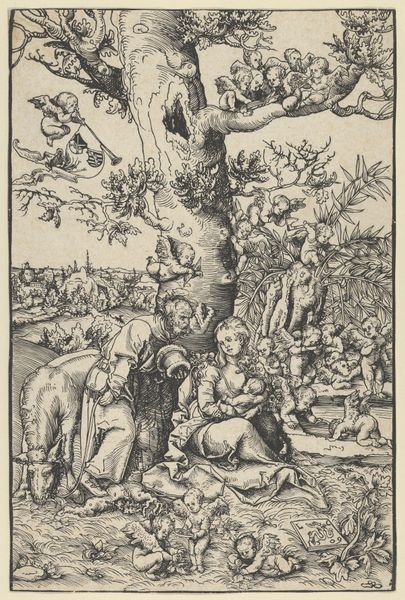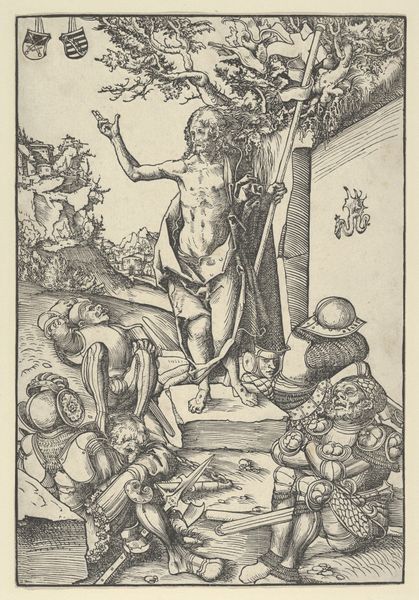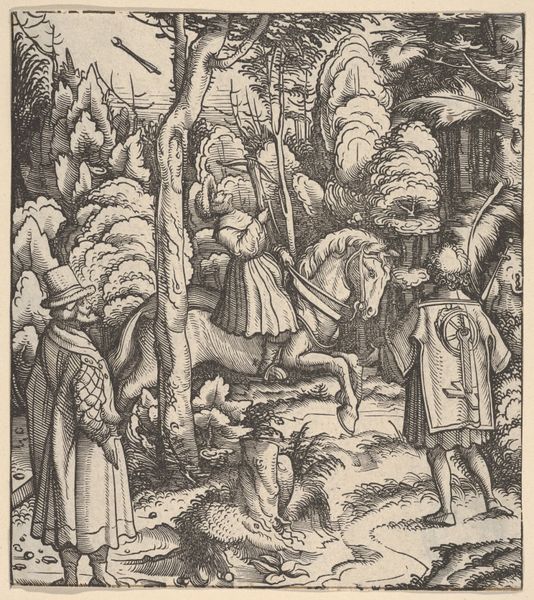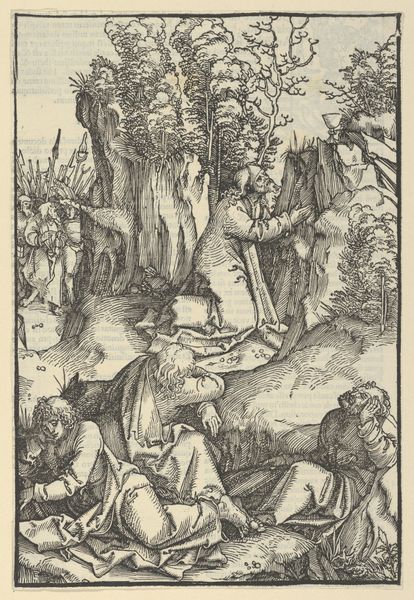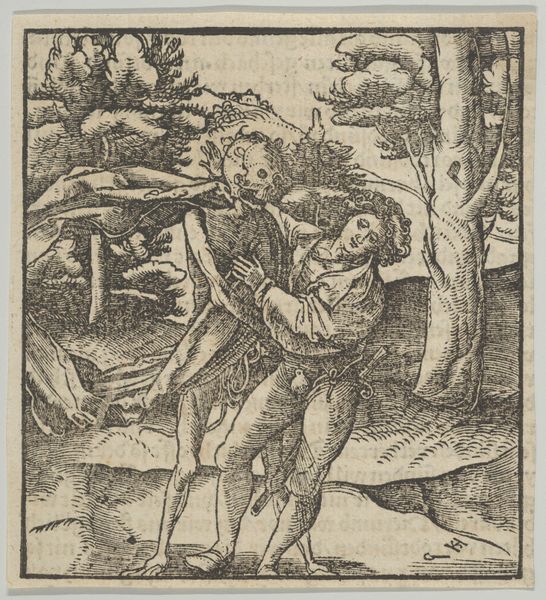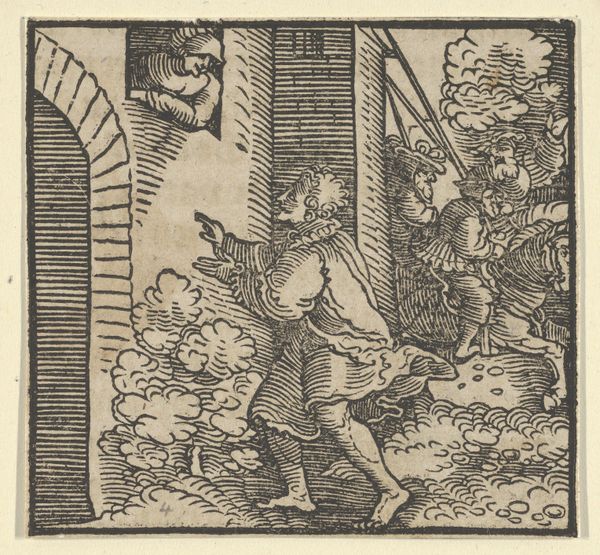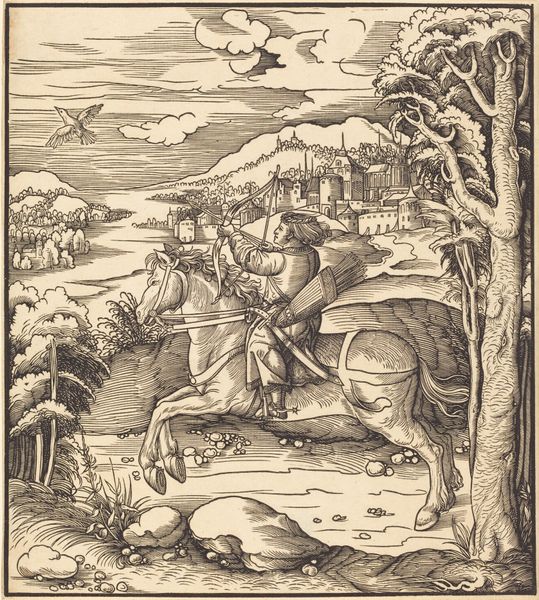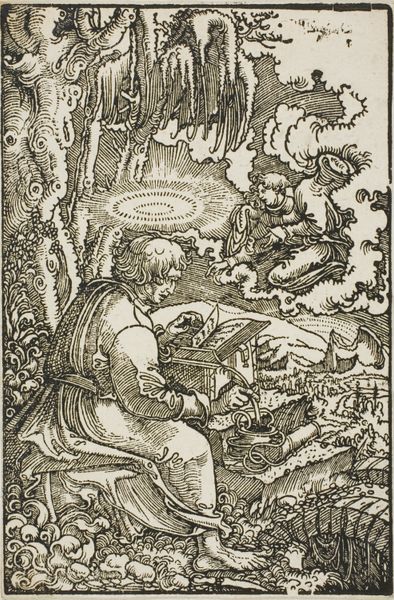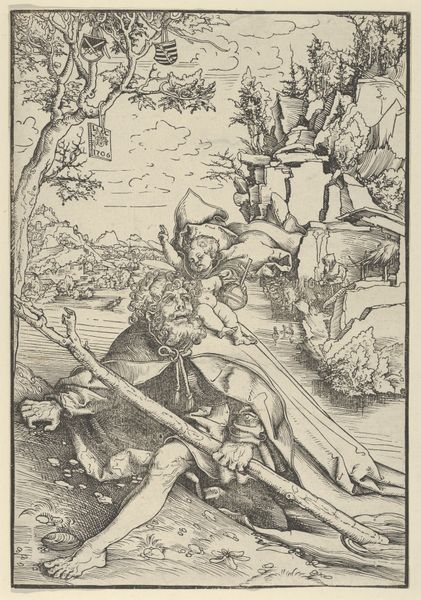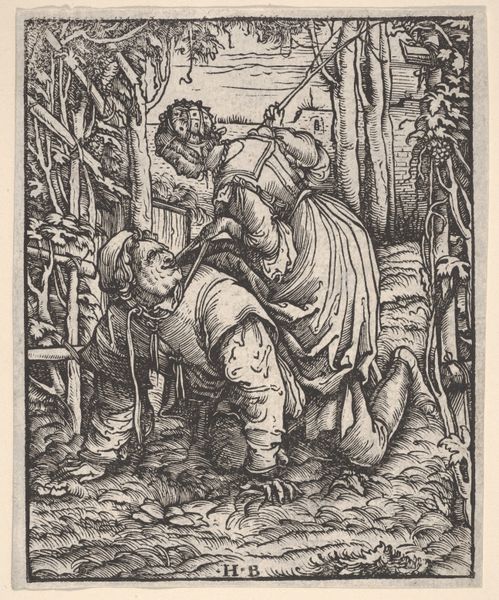
drawing, print, engraving
#
drawing
#
pen drawing
# print
#
landscape
#
figuration
#
italian-renaissance
#
engraving
Dimensions: sheet (trimmed within plate mark): 16.2 x 11.2 cm (6 3/8 x 4 7/16 in.)
Copyright: National Gallery of Art: CC0 1.0
Curator: Here we have "Apollo and Marsyas", an engraving by Benedetto Montagna, dating from around 1515 to 1520. Editor: It feels almost dreamlike... the sharp lines of the engraving give this soft, mythical scene a lovely tension. Are they battling musically or harmonizing? Curator: The printmaking process itself would have involved considerable labour. Think of the planning required, the skillful manipulation of tools on a metal plate. We see the Renaissance interest in classical subjects playing out, but filtered through Montagna’s material conditions as an artisan engraver. The creation of multiple copies also hints at shifting consumption patterns of art. Editor: Absolutely. And the landscape setting – the oddly-shaped, inky boulders, those wispy trees – lends it a strange tranquility, despite the, shall we say, charged atmosphere. Apollo doesn’t look so severe as you'd think in light of what's to come, does he? The figures’ costumes blend something earthy with something otherworldly… Curator: We see this blend embodied in the very lines themselves, the controlled versus the impulsive. It also invites contemplation on the social status of craft, as engraving was transitioning from craft to art within printmaking culture. Was this print intended for display, or a more utilitarian purpose? Editor: I think there's a deep emotional resonance. It hints at both harmony and discord, creation and destruction - this subtle, bittersweet premonition, amplified through the precision and textures unique to engraving. What I love most is that tension - between the brutality of the myth and its gentle rendition, as though both possibilities might still coexist. Curator: Indeed, analyzing it this way emphasizes print culture as an arena for the merging of classical narratives with contemporary production methods, reflecting new economic and cultural accessibility. Editor: Seeing the blend of human stories etched through labor, time, skill; that transforms how I experience its beauty, truly.
Comments
No comments
Be the first to comment and join the conversation on the ultimate creative platform.
